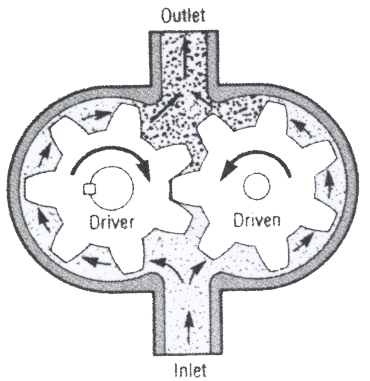
|
Basic Hydraulics: Pressure In our last Newsletter (March/April 2002) we started a series on
Basic Hydraulics. Pressure = force (in pounds)/Area (in square inches) We describe pressure as: X amount of PSI, Example:
A round rod 1 1/8 inches in diameter has about 1 square inch of
surface if stood on one end. Pushing with a force of 10 lbs downward,
we would be exerting a pressure of 10 lbs per square inch (10 PSI).
Now suppose we exerted the same downward 10 lb force on a round
rod with a diameter of .18 inches, now we have 400 PSI. Example: 1.125 ÷ 2 = .562 x .562 x 3.14 = .99 or almost
1 sq. inch. Putting pressure to practical use:
In the example above, we showed that 1 1/8 piston has an area of
about 1 square inch. One square inch x 400 PSI = 400 pounds of lift.
Now push the 3/16 plunger down with a force of 50 pounds and we
have the capacity to lift a weight equal to 2,000 pounds. However,
we must be patient with the process as the 3/16 inch plunger will
not displace very much oil with each stroke and therefore many strokes
are required to lift the weight up, but we are able to do so because
of the mechanical advantage the jack provides for us. Volume is a function of area x distance traveled for linear actuators. Our 3/16 plunger is a fraction of the size of the 1 1/8 piston in square inch area and therefore the piston will only move a fraction of the distance that the 3/16 plunger strokes. That explains why we must operate the jack handle fast and furious if we are in a hurry to raise the car. Let's jump to a pump example. A pump is sized by how much oil is moved from the intake port to the outlet port per revolution. This size is described as CIR. (Cubic Inches per Revolution). Also, the size of a pump can be described in terms of GPM (Gallons Per Minute) at so many RPM (Revolutions Per Minute). The pump depicted below moves hydraulic oil around the outside of the gears from the inlet port to the outlet port. Rotation is accomplished by a prime mover, usually an electric motor or engine.
The pump moves a very small amount of oil per 1 revolution, similar to the small plunger on the car jack, but it makes a lot of revolutions per minute. Let's say the pump is rated at .2 CIR and will be driven by an electric motor rotating at 1750 RPM, then the pump will flow .2 x 1750 = 350 cubic inches of oil per minute, but we want to know how many gallons per minute that is equal to. We need to divide 350 by 231 cubic inches (231 cubic inches = 1 gallon) and now we know that the pump output is approximately 1 1/2 GPM at 1750 RPM. If we were to connect the same pump to a gasoline engine and rotate the pump at 3,500 RPM, then it would flow 3 GPM. Keep this in mind
|
OPEN:
(PST)
.......Mon-Fri:
7am-5pm .........Sat: 7am-12
noon ..... ...Sun: CLOSED
Winter Hours: Monday-Friday
8am-5pm (November, December & January)
Copyright: 1998-2011


